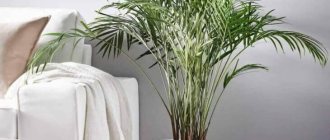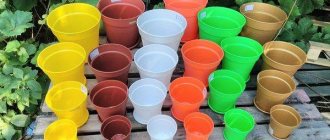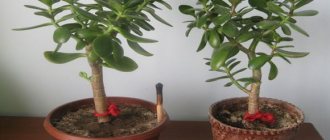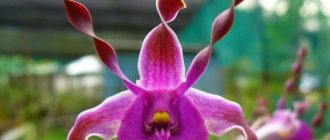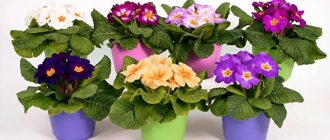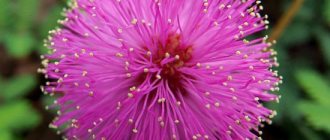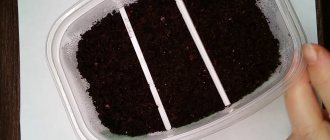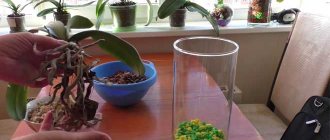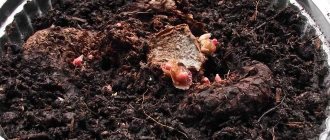Requirements for flower containers that must be met
Orchids belong to the category of plants in which the root system is involved in photosynthesis. Therefore, the penetration of sunlight through the walls of the container is of great importance. The container for epiphytes must be transparent.
The right pot must meet several more requirements:
- Given the natural growth conditions, the plant does not require a large container. It should be slightly larger than the root system.
- The container should provide good aeration of the roots and unimpeded drainage of excess moisture. To do this, there should be several holes at the bottom.
- The plant requires maintaining a certain temperature regime, so it is preferable to use plastic pots.
The right container for an orchid creates favorable conditions for the plant - as close as possible to its natural habitat.
The correct choice of container affects the well-being of the flower in the next few years, so you need to follow some rules.
Correct for common domestic species
Phalaenopsis is the most common type of flower that can be kept at home. This epiphyte will feel comfortable both in standard containers, the height of which is greater than the width, and in bowls with an open root system. The main condition is a large number of drainage holes and transparency.
Read more about which container to choose for phalaenopsis here.
For dendrobiums you need to choose small containers. The volume of the pot should correspond to the volume of the root system.
Cattleyas, on the contrary, need spacious containers with a wide neck - baskets or bowls.
Cymbidium roots grow vertically downwards, so the plant needs tall transparent pots with drainage holes. Otherwise, the development of the root system will be limited to the bottom of the container.
Should it be transparent or not?
A transparent pot is required only for phalaenopsis; the roots of this variety take part in photosynthesis. Other species can grow in containers of any color.
This container will be useful for beginning gardeners. Through the walls you can monitor the condition of the roots and control the need for watering.
Why and what is not suitable?
There are several options for containers, the use of which is strictly contraindicated for orchids of any kind.
It is not recommended to use:
- containers without ventilation holes on the sides and drainage holes at the bottom;
- metal;
- unstable or with a narrow neck.
Hanging planter
It is quite difficult to create conditions reminiscent of natural ones for a plant at home. This can be done using decorative vessels - flower pots. An ordinary pot with a plant is placed in such containers; most often, they do not have additional holes for water drainage, so you can hang the pot on the wall and not worry that water will drip onto the interior items during watering.
There is a wide variety of types of pots:
- plastic, can be with or without holes, transparent or matte;
- glass;
- ceramic;
- baskets made of wood, plastic or metal.
All of them are suspended using ropes, fishing lines, cables or mounted on supports or stands.
Attention! A hanging transparent flowerpot for orchids is more suitable for small-sized plants, since you will have to remove it from the flowerpot during maintenance.
Most often, mini and midi varieties of orchids are placed in flowerpots, but some lovers of indoor plants are ready to keep large specimens in this way.
Options with photos
The range of products for gardeners offers a large number of different containers for growing. Before purchasing, you need to figure out which option will be most suitable for planting a certain type of plant.
Plastic
The most common and affordable type of pot. The orchid roots do not stick to the walls, sunlight penetrates well into the root system, and thanks to the transparency of the vessel, you can monitor the health of the roots. The unpresentable appearance is the only disadvantage of such a container. Suitable for all types of plants.
Glass vase for closed system
Orchids in a glass vase or flask look especially impressive and will be an excellent gift for any occasion. However, such a container is suitable only for those varieties that allow growth without soil (in or without water). Vandas and phalaenopsis are grown in this way.
It is not recommended to place a flower in a glass vessel on a windowsill or refrigerator to prevent excessive hypothermia.
Read more about how to grow crops without soil in this article.
Crown with holes
The design of such a container is designed specifically to meet the needs of capricious orchids. It consists of a small tray and rods extending from it, through which air circulates. Well suited for phalaenopsis and vandas.
The gaps between the rods are both plus and minus at the same time. The substrate will be washed out through these holes during operation. In addition, the container system will not retain moisture inside; it will quickly evaporate through the walls. You will have to water the flower more often. Also, “Crown” containers are more expensive than regular ones.
Double
Consists of two containers. The internal one is equipped with a large number of drainage holes and a footrest for the accumulation of liquid.
A double pot for orchids includes an automatic watering system. In such containers, it is necessary to constantly ensure that the liquid in the pan does not stagnate, otherwise this will lead to rotting of the roots. Flower growers have fallen in love with the double, inexpensive containers from Fiji.
Clay
Unfired clay retains and distributes moisture well in the root system. The substrate in such a pot dries out and does not rot. The containers have an impressive mass and are stable. The rough surface of the vessel is noted as a disadvantage. The roots will stick to the walls.
Dendrobiums, oncidiums, brassias and cattleyas grow well in clay containers.
Ceramic
An orchid in a ceramic pot looks aesthetically pleasing. The roots breathe well, so they require frequent watering. The inner surface is smooth, so the roots do not grow.
Wooden hanging basket on the wall
Pots made from natural materials are characterized by good air exchange and lightness.
The porous structure of the walls ensures good ventilation of the root system. Moisture evaporates quickly, so the orchid needs to be watered more often. Externally, such baskets look very aesthetically pleasing and are a beneficial addition to the plant. Thanks to the hanging design, it can be placed anywhere. Great for Vandas and Cattleyas.
Large and ideal for several plants
Paired orchids will be a wonderful addition to the interior; as a rule, two different varieties are used. Plants are planted in a single container or in one that has two special compartments.
Preference should be given to containers that are not deep and wide.
Special with automatic watering
The auto-watering function greatly simplifies the procedure for caring for the plant. This option will be especially relevant for flower growers who are often absent from home.
You can purchase a container with automatic watering at any flower shop. But you can design such a container yourself. The most popular option is a pot with a tray.
Bamboo
Bamboo containers are pots made from bamboo rods. Their composition brings the conditions for keeping orchids in the natural environment as close as possible.
The mesh design of the container provides good ventilation, which promotes uniform drying of the substrate.
Bamboo pots, as a rule, are not small in volume and are intended for growing large varieties.
Backlit
In conditions of lack of natural light, you can support the normal development and health of the flower using a backlit pot. Such models will be effective in autumn and winter. This design can be used as a night light. The only negative is the high cost.
An alternative to such a container would be to install artificial lighting. Read how to do this here.
Glass pots
In glass flowerpots, orchids look quite aesthetically pleasing. Such containers are quite practical in terms of benefits for the plant’s root system, as they provide a good amount of light to the roots.
How to replant Kalanchoe - what soil and pot are needed
But among flower growers, opinions on the use of this particular material for growing plants are divided. On the one hand, this method helps to retain moisture in conditions of low environmental humidity, but on the other hand, a closed container without drainage is a bad option for the plant.
Due to the accumulation of condensation on the walls of the flowerpot, green algae develops on the roots of the orchid. Replacing the substrate 2-3 times a year will help get rid of this problem.
Attention! Only experienced gardeners who can control the humidity level of the substrate can care for orchids in glass flowerpots.
For beginners and amateurs, it is better to select glass vessels that have at least one hole for air and moisture circulation.
Handmade
You can make a container for an orchid with your own hands. The main thing is to adhere to the basic requirements for pots. The material used is plastic or wood.
A plastic container is the simplest and most affordable option. You need to follow a few simple steps:
- take a plastic container as a basis: a bottle, bucket, etc., which can be purchased at a disposable tableware store;
- using a soldering iron or a heated nail, make many drainage holes on the bottom and sides;
- The pot for the plant is ready.
The video shows a manufacturing option:
Features of watering and care
The plant is not watered for the first few days after transplantation, but it can be sprayed leaf by leaf. It is necessary for microtraumas on the roots to heal.
During the period of adaptation and rooting (10-14 days), the plant must be covered with tulle or placed in a place where it will not receive direct sunlight.
Two to three days after transplanting, the orchid can be watered by dipping, soaking, or directly from the shower. It is necessary to take into account the peculiarities of the “Crown” - you will have to water more often, since the moisture will evaporate much faster through the cracks of the pot.
On hot summer days, the frequency of watering can be daily, depending on the size of the pot itself and the plant that grows in it.
Soil: which is better?
They strive to make the composition of soil for orchids as close as possible to the tropical natural conditions of plant growth. The substrate should be light and loose.
The soil can be single-component and consist only of pine bark or multi-component, additionally including expanded clay, moss, coal, expanded clay, peat, coconut fibers, perlite, vermiculite, fern roots and charcoal.
Unusual pots for orchids
Recently, flower growers are increasingly choosing the Corona plastic pot for orchids for their green spaces. It is a through structure made of flexible transparent plastic rods. The rods, arranged in a circle, have small gaps to hold the soil. Included with such containers is a special double tray, which can be used to create drainage; the presence of special fasteners allows you to hang the plant in a pot.
Crown pot for orchids
This type of container has a large number of advantages, including providing light for photosynthesis, good ventilation, and the original style of the product.
Despite the advantages, there are some disadvantages of such a pot. Through the large holes in the container, the substrate can be poured into the tray and then the roots will grow through the pot. For the same reason, moisture evaporates much faster and it becomes necessary to create additional conditions for water retention. During transplantation, problems may arise associated with damage to the root system of the flower, since the roots can grow through the walls of the Crown.
For reference! An orchid crown with a tray is suitable for plants whose roots are active in photosynthesis.

